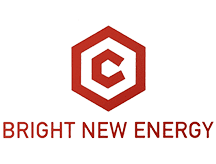Countries in the Economic Community of West African States (ECOWAS) will expand access to grid electricity to over 1 million people, enhance power system stability for another 3.5 million people, and increase renewable energy integration in the West Africa Power Pool (WAPP). The new Regional Electricity Access and Battery-Energy Storage Technologies (BEST) Project –approved by the World Bank Group for a total amount of $465 million— will increase grid connections in fragile areas of the Sahel, build the capacity of the ECOWAS Regional Electricity Regulatory Authority (ERERA), and strengthen the WAPP’s network operation with battery-energy storage technologies infrastructure. This is a pioneering move that makes way for increased renewable energy generation, transmission, and investment across the region.
West Africa is on the cusp of a regional power market that promises significant development benefits and potential for private sector participation. Bringing electricity to more households and businesses, improving reliability, and harnessing the region’s substantial renewable energy resources—day or night—will help accelerate West Africa’s economic and social transformation.
Over the past decade, the World Bank has financed close to $2.3 billion of investments in infrastructure and reforms in support of WAPP, considered the key to achieving universal access to electricity by 2030 in the 15 ECOWAS countries. This new project builds on progress and will finance civil works to accelerate access in Mauritania, Niger, and Senegal.
In Mauritania, rural electrification will be expanded through grid densification of existing substations, which will enable the electrification of Boghe, Kaedi and Selibaby, and neighboring villages along the Southern border with Senegal. Communities in Niger’s River and Central East regions that live near Niger-Nigeria interconnector will also gain grid access, as will communities around substations in Senegal’s Casamance area. Connection charges will be partially subsidized, which will help keep costs down for the estimated 1 million people expected to benefit.
In Côte d’Ivoire, Niger, and eventually Mali, the project will finance BEST equipment to improve the stability of the regional electricity network by increasing the energy reserve in these countries and facilitating integration of variable renewable energy. Battery-energy storage technologies will enable WAPP operators to store renewable energy generated at non-peak hours and dispatch it during peak demand, instead of relying on more carbon-intensive generation technology when the demand is high, the sun is not shining, or the wind is not blowing. It is expected that the BEST will further spur private sector participation in the region by supporting the market for renewable energy, as the battery-energy storage capacity installed under this project will be able to accommodate the 793 MW of new solar power capacity that WAPP plans to develop in the three countries.
The World Bank’s International Development Association (IDA), established in 1960, helps the world’s poorest countries by providing grants and low to zero-interest loans for projects and programs that boost economic growth, reduce poverty, and improve poor people’s lives. IDA is one of the largest sources of assistance for the world’s 76 poorest countries, 39 of which are in Africa. Resources from IDA bring positive change to the 1.5 billion people who live in IDA countries. Since 1960, IDA has supported development work in 113 countries. Annual commitments have averaged about $18 billion over the last three years, with about 54 percent going to Africa.
Post time: Jul-21-2021
